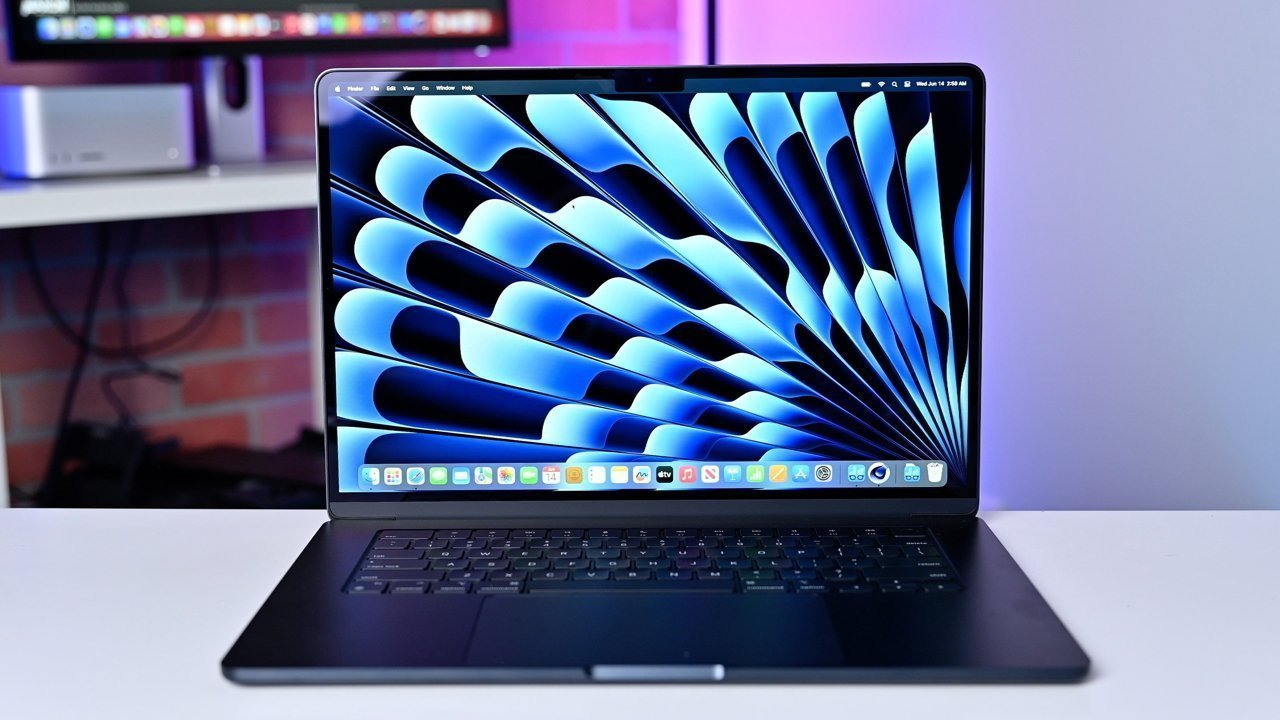OLED MacBook Air pushed back to 2029, but MacBook Pro on schedule for 2026
A new supply chain report claims that Apple is continuing to plan OLED screens for the MacBook Pro in 2026, but has further delayed an OLED MacBook Air.

MacBook Air
Backing up recent rumors that an OLED MacBook Air will not be released until 2028 at the earliest, a new report says it will now be 2029. Unsurprisingly, the report claims that the higher-cost MacBook Pro will be first to get this improved display, but it too backs up rumors of a 2026 release for this model.
According to The Elec, Samsung Display is adding a second depositor, the production line equipment needed for OLED screens. The existing first depositor is believed to be dedicated to producing OLED screens for the MacBook Pro, while Samsung Display looks for other customers for this second line.
It's implied that Samsung Display may have expected to need a second depositor to meet demand from Apple for an OLED MacBook Air. Samsung Display's total OLED capacity using the two depositors is believed to be 10 million units annually, but Apple is expected to ship only between 3 million and 5 million MacBook Pro models.
While Apple has reportedly pushed back an OLED MacBook Air to 2029, the same report claims that this device will see a screen update in 2027. Specifically, the MacBook Air will move to an improved LCD panel using Oxide TFT technology.
It's claimed that this technology offers sharper images than the current anopholytic silicone (a-Si) TFT technology. It's said that this move will bring faster performance in scrolling, and also improve power efficiency.
Samsung Display and BOE are both constructing production lines for the New MacBook Air screens. Separately, BOE is said to be making flexible smartphone OLED screens, specifically because of the change to the MacBook Air order.
It's previously been reported that one reason for Apple delaying the OLED MacBook Air is the cost of production. However, it's also believed that the OLED iPad Pro failed to prompt the strong upgrade cycle that Apple had expected.
Apple may also be looking to create more daylight between the lower-cost MacBook Air and the more expensive MacBook Pro. When it launched the OLED iPad Pro, Apple brought a larger screen to the iPad Air, which may have cannibalized sales of the more costly model.
Note that The Elec is generally a decent source of supply chain information. It tends to be less accurate in its conclusions about Apple's plans based on that information, however.
Rumor Score: Likely
Read on AppleInsider

Comments
That would be an immediate order of the top specced Air.
I have seen and used such displays for years now and consider them superior for my usage (excludes super-bright outdoors use).
Otherwise the current Air displays are inferior to my Dell XPS 2-in-1 from 2019 which offers darker blacks (no backlight blue bleed) and richer color palette.
https://www.techradar.com/tablets/ipad-pro/the-ipad-pro-2024s-new-tandem-oled-screen-explained-why-its-important-and-why-it-took-so-long-to-come
This would be better than mini-LED in current MBPs, which have a backlight flicker when changing between SDR and HDR brightness.
It would be nice to have on the Air too, even if it was a premium BTO ($100-200) option.
LG has been pushing QNED displays recently as an alternative to OLED, they are closer to mini-LED with smaller LEDs. They offer similar quality to OLED at a lower price but every other technology just seems like a compromise vs OLED. The mainstream Air model might have supply issues for OLED as it would sell 10m+ units but as a BTO option, it would be ok. The MBPs have lower unit volume.
https://www.youtube.com/watch?v=eOAbFAca0OU&t=325s
Once you get used to either mini-LED or OLED with the improved black levels and color depth, especially red, the cheaper display types start to look like how TN panels used to look compared to IPS.
Raising the entry price isn't needed because the IPS displays will suffice for most people but it would be ok to offer a higher quality display at a higher price for people who want the best experience for videos, photos, games, artwork etc. When people use the display every day for years, an extra $100-200 is not so expensive for the extra quality and faster response times.
But if you didn't label those images and did a blind test asking people which is which, I don't think people can tell the difference, especially the soda image, where the iPA display seems really saturated. Easier to tell the difference. Easier to tell if you know what to look for. For the mass market, I don't think that know. This makes the iPP harder to sell in the retail store.
So, I think the iPP has to go to ~12.5 and ~13.5 to make it obviously different.